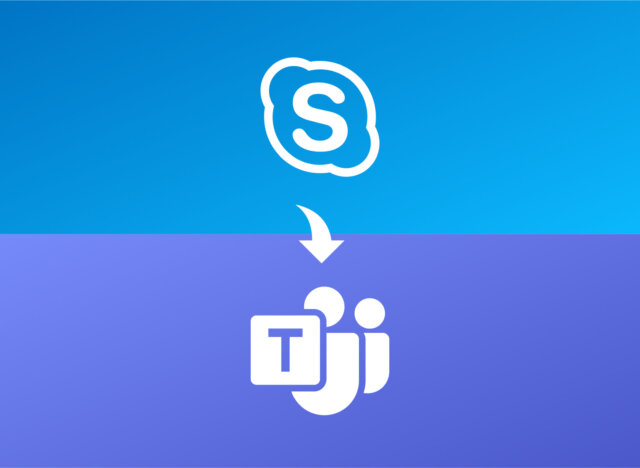Microsoft is shutting down Skype, the internet calling service it bought almost 14 years ago for $8.5 billion. Users are set to be invited to switch to Teams before the service is turned off in May. Skype posted on X on Friday: “Starting in May 2025, Skype will no longer be available.
Skype Is Shutting Down: What You Need to Know
After revolutionizing internet calls for over two decades, Skype is officially shutting down. Microsoft, which bought Skype 14 years ago, has announced that the app will be retired on May 5, 2025, to focus entirely on Microsoft Teams.
This means Skype users have just 10 weeks to decide their next steps. While Skype once had over 300 million users, its active user base has dropped significantly, with Microsoft last reporting 36 million users in 2023.
“We know this is a big change for our Skype users,” said Jeff Teper, President of Microsoft 365 Apps, in a recent interview. “We’re grateful for their support, and we’ve learned a lot from Skype while building Teams over the last seven years.”
So, what does this mean for you? Before May 5, you’ll have the option to transfer your contacts and chats to Microsoft Teams or download your Skype data using the built-in export tool.
Stay tuned as we walk you through how to save your data and make the switch smoothly!The business case
The Business Case: Why Skype Is Shutting Down
For those who have followed Skype’s journey, this news isn’t surprising. The signs have been there since 2016 when Microsoft introduced Teams—a move that marked a shift in its cloud communication strategy.
Microsoft had already launched Skype for Business in 2015, but Teams quickly became the priority. While many saw Teams as a Slack competitor, Microsoft had bigger plans: to create a full collaboration platform that included messaging, video calls, and integrations with other apps—putting it in direct competition with Skype.
By 2017, Microsoft announced plans to phase out Skype for Business, completing the process by 2021. Then came another big shift: when Windows 11 launched, Teams was built-in, while Skype was sidelined.
The final warning came in December 2024, when Microsoft stopped letting Skype users add credit or buy phone numbers, pushing them toward subscriptions instead.Now, Microsoft believes the time is right to retire Skype and fully embrace Teams. Over the past two years, consumer call minutes on Teams have quadrupled, showing strong user adoption.“We’ve thought about this for a while,” said Jeff Teper, President of Microsoft 365 Apps. “But now, the numbers prove that consumers are ready for the switch.”
With that, a tech icon from the early internet days is saying goodbye, making way for Microsoft’s next big vision.
Skype’s Rise and Fall in User Numbers
Skype changed the way people communicated online, starting with voice calls before expanding to video and file sharing. But with the rise of smartphones and new messaging apps, Skype’s popularity has taken a hit. For comparison, WhatsApp surpassed 2 billion users in 2020.
Back in 2010, when Skype planned to go public, it had 560 million registered users and 124 million monthly active users. But instead of launching an IPO, Microsoft bought Skype for $8.5 billion in 2011 and grew its user base to 300 million by 2013—its peak.
Since then, Microsoft has rarely shared Skype’s user numbers. However, in March 2020, during the COVID-19 pandemic, Skype usage spiked 70% in a month, reaching 40 million daily users, as people looked for ways to stay connected.
The most recent update came in early 2023, when Microsoft revealed that 36 million people were still using Skype daily. Meanwhile, Teams kept growing, and Skype’s numbers stayed flat.
“Skype saw a boost during the pandemic, just like Teams,” said Jeff Teper, President of Microsoft 365 Apps. “But over the last couple of years, Skype has remained stable. We felt the time was right to make the move.”
And that’s why Microsoft is now going all-in on Teams, leaving Skype behind.
The Future After Skype: Moving to Teams Free
Microsoft is encouraging Skype users to switch to Teams Free, which comes with new features like calendar integration. However, it lacks one major Skype function—the ability to make and receive phone calls to landlines and mobile numbers using a Skype phone number.
This change has been coming for a while. In December 2024, Microsoft stopped allowing users to add credit or buy new Skype phone numbers. Those with an active subscription or remaining credit could still make calls, but subscription renewals will end on April 3, 2025.
For users who still have Skype credit, Microsoft is offering a Skype Dial Pad that will remain available in the Skype web portal and Teams for an indefinite period.
“We’ll support this as long as users have credit and are using the feature,” said Amit Fulay, Microsoft VP of Product.
While business versions of Teams still support phone calls, Teams Free will not have this feature. Microsoft says this is because fewer people use landline and mobile calling services now, as most rely on mobile data and messaging apps instead.
“We’ve seen a shift in how people communicate,” Fulay explained. “When Skype first introduced calling, mobile data plans were rare. Today, people have more options.”
With that, Skype’s calling days are coming to an end, marking another big shift in how we connect online.

Smooth Transition: Migrating from Skype to Teams
Skype users won’t be left in the dark—Microsoft is making the switch to Teams as seamless as possible. Simply download the Teams app, log in with your Skype credentials, and your chats and contacts will transfer automatically.
For those who prefer, exporting data is an option, though there’s little flexibility in where it can be imported.
“We wanted to ensure people don’t lose their contacts or memories during this transition,” said Amit Fulay, Microsoft VP of Product. “If they move to Teams, everything will be restored.”
Skype will continue working until May 5, 2025. After that, users who take no action will have their data stored until the end of the year—then it’s gone for good.
According to TechTrend365, this marks a major step in Microsoft’s strategy to fully embrace Teams and sunset Skype for good.
Blurring the Lines: From Skype to Teams
The gap between business and personal communication has faded over time—thanks to tech trends and remote work.
Skype started as a consumer tool that grew into business use. Teams took the opposite path, launching for business but now embracing personal users. Yet, does “Teams” really feel like a place for friends and family?
Microsoft doesn’t see this as an issue. Jeff Teper points out that tools like Word, Excel, and PowerPoint serve both businesses and families—so why not Teams?
“A lot of people will make the switch,” he said. “We’ve seen our tools work for both personal and professional life.”
As Skype fades out, Teams is stepping in—whether for work, school or just staying connected.

